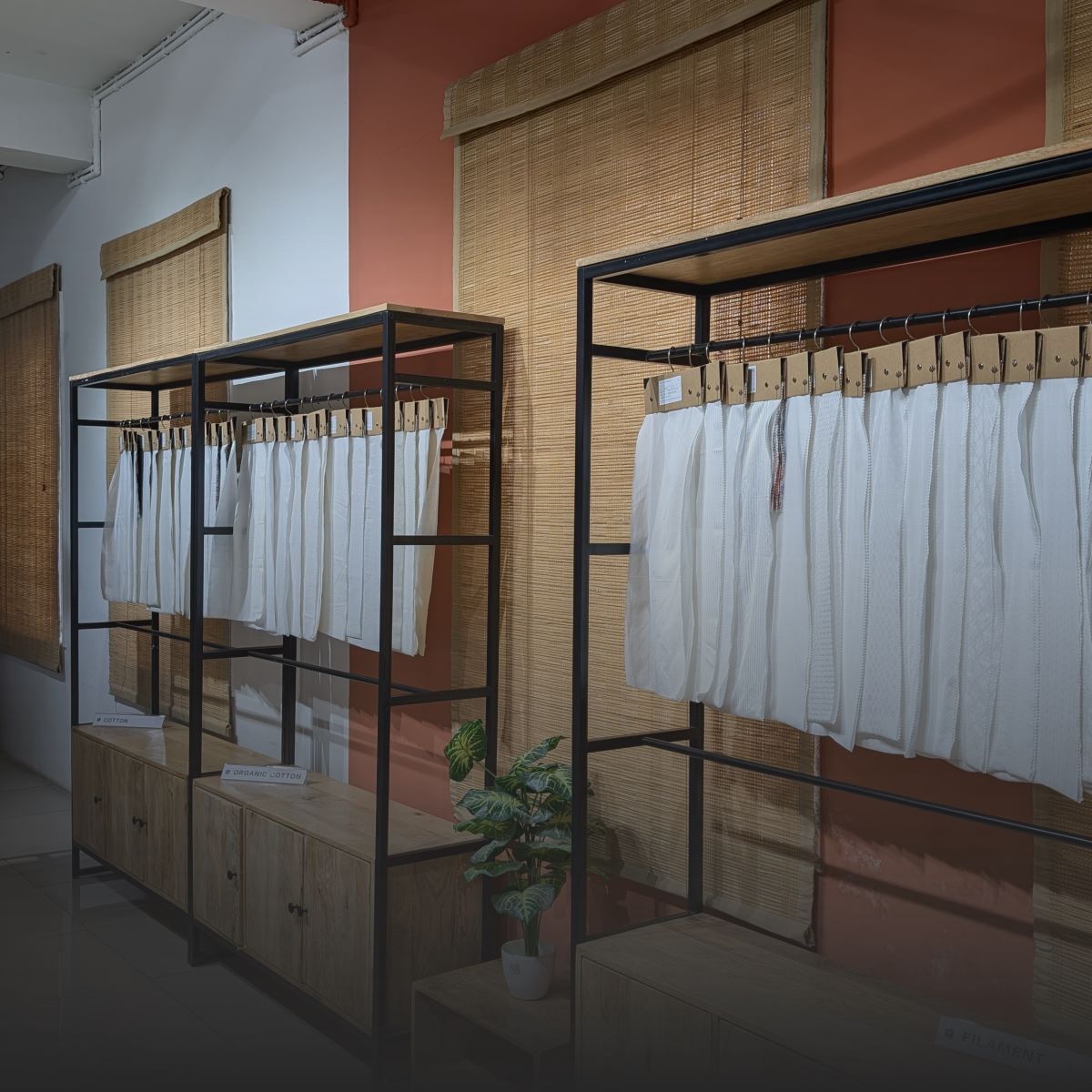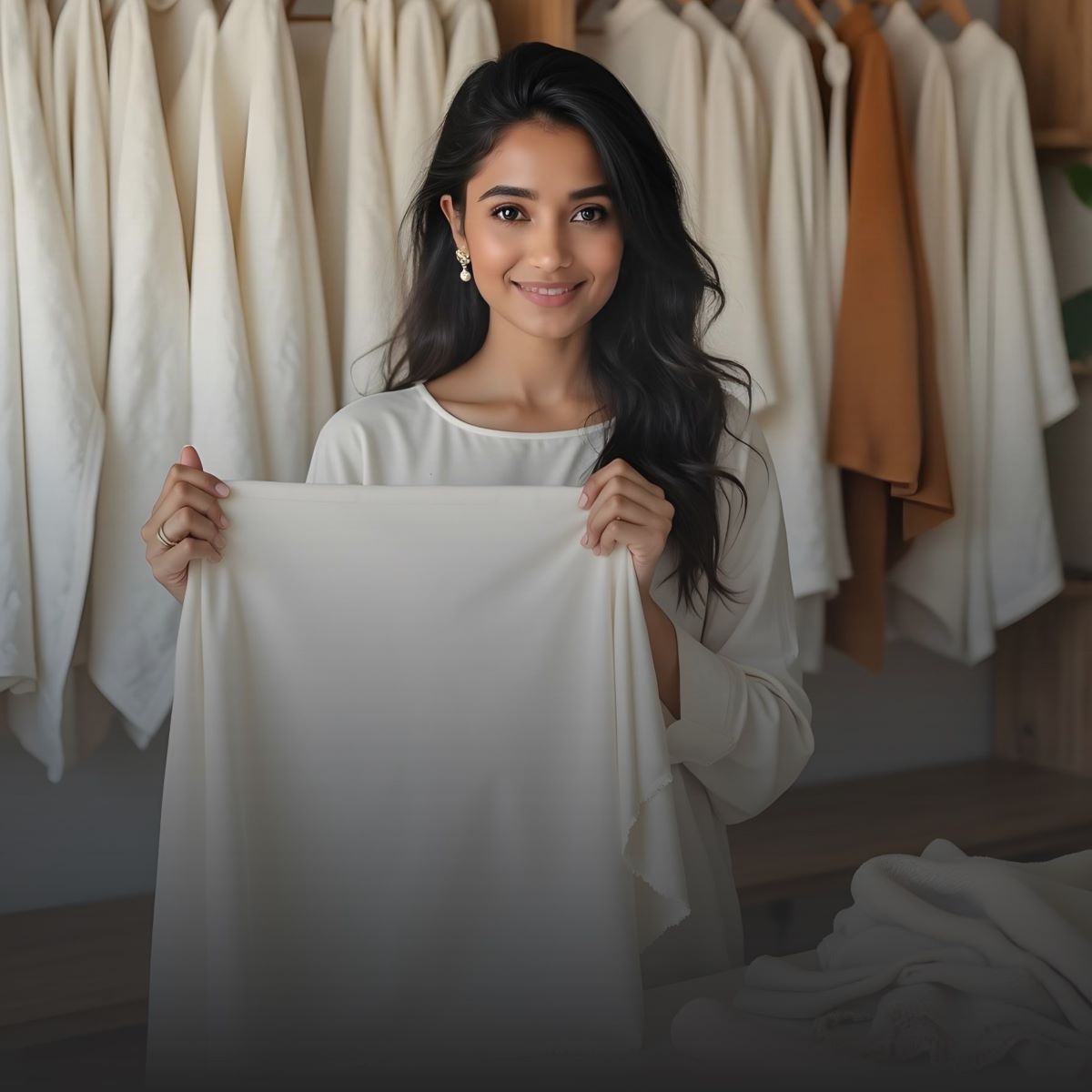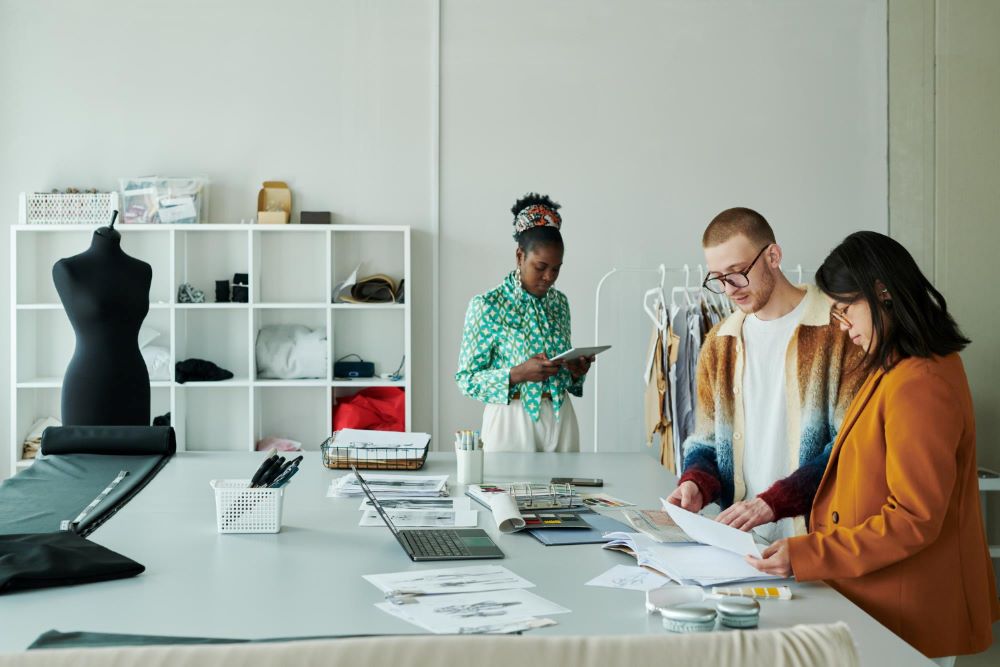Starting a fashion business in the USA in 2025 is exciting and aspirational. The fashion landscape is rapidly changing in response to the growing demand for sustainable, personalized and technology-integrated clothing. Whether your goal is to establish a luxury brand, streetwear label or eco-friendly clothing line, the first step should be to create a strategic business plan. This is a detailed guide designed to assist you in building a successful and expandable fashion brand in the current competitive landscape.
You Can Also Read This For More Related Information: How to Build an Online Clothing Business Store in the USA
Roadmap To Success For Starting A Fashion Business In The USA

Before starting a fashion brand in 2025, it's important to do a lot of research, get ready carefully, and find partnerships you can trust. A thoughtfully crafted strategy includes thorough market research, careful competitor analysis, and sourcing high-quality supplies from reliable providers.
AI can assist you in exploring fashion trends if you're launching a clothing business. These tools can help you grasp your audience's needs prior to production. Explore our comprehensive guide here: "How to Use AI to Predict Fashion Trends for Your Clothing Business in the USA."
Create your own fashion business roadmap before launching anything.
1. Define Your Brand Identity

Before you create your first garment, defining a clear brand identity is essential. This encompasses you:
- Mission: Why does your brand exist?
- Vision: What change do you want to bring in the fashion world?
-
Values: What does your brand stand for? Sustainability, inclusivity, affordability?
Example: If your mission is to make sustainable fashion accessible, your brand could emphasize organic materials and ethical sourcing, appealing to Gen Z consumers who value eco-conscious purchases.
Branding Essentials: For success, focus on creating a fascinating brand name, a unique logo, and a visual identity that matches your audience's tastes.
2. Conduct Market Research & Identify Your Niche

- Explore the current market landscape. Key developments to keep an eye on in 2025 include:
- Sustainability
- Inclusive sizing
- Customizable fashion
- Bright clothing and tech-enhanced apparel
For example:
- Athleisure wear made from biodegradable fabrics
- Modest fashion for Muslim women
- Streetwear with augmented reality (AR) integration
Pro Tip: Utilize resources such as Google Trends, Instagram hashtags, and Shopify Market Research reports to gain insight into consumer search behaviour.
3. Develop a Comprehensive Business Plan

Get all your ducks in a row before getting into the details. This will make sure that every part of your plan is in sync and ready to go:
- The Executive Summary tells people what your brand stands for, how it makes money, and its main goals. It sets the direction for the rest of your plan.
- In the Company Description, you talk about your brand's history, key values, and unique selling proposition (USP), which makes you different from other companies in the same field.
- Market Analysis looks at current trends in your business, creates a profile of your target audience, and analyzes your competitors to find opportunities and potential problems.
- Product Strategy describes your collection's themes, design ideas, and production process. This makes it clear what you'll sell and why it's crucial.
- Your Marketing Plan tells customers how you'll reach and interact with them. It includes advertising channels, branding strategies, influencer partnerships, and your digital strategy.
- Sales Channels describe where and how you'll sell your goods, such as on your own e-commerce site, pop-up shops, third-party websites, and physical stores.
- Financial Projections tell investors and other stakeholders how much your company will cost and how you will set prices, profit margins, and revenue goals.
- The Operations Plan clearly outlines how you will run your company, including managing inventory and logistics and selecting delivery partners to guarantee seamless order fulfilment.
By maintaining this plan's flexibility, you'll be ready to adjust and enhance your strategy as consumer preferences change and fresh opportunities present themselves.
4. Choose Your Business Structure and Register It

The legal structure of your business plays a crucial role in taxation and protection:
- LLC: Highly recommended for fashion startups because it provides limited liability and is easy to manage.
- Sole Proprietorship: The simplest structure, but it lacks liability protection.
- Corporation: The best fit for companies that want to get a lot of money.
Next Steps:
- Register your business name
- Apply for an EIN (Employer Identification Number)
- Get appropriate licenses and permits dependent on your state
5. Source Suppliers and Manufacturers

Your product quality depends on your materials and production partners.
If you're started a clothing brand, you will need reliable fabric wholesale suppliers in the USA.
Example: You can contact Fabriclore, a trusted high-quality fabric sourcing platform that partners with U.S.-based and global fashion brands. They offer sustainable and ethically sourced materials, perfect for conscious fashion businesses.
Look for suppliers who:
- Offer fabric certifications (e.g., GOTS, OEKO-TEX)
- Can handle small batches and scale production
- Have transparent supply chains
Note: As USA tariffs on Chinese textiles increase, Indian suppliers such as Fabriclore are becoming more prominent. This change provides fashion startups an intelligent and economical way to obtain domestically raw materials.
6. Design and Develop Your Product Line

Create a capsule collection featuring 5-10 essential pieces to begin with. Your style and brand ethos should be prominently displayed through these.
Prototyping and Sampling: Collaborate with manufacturers to evaluate fit, durability, and appearance. Utilize technology such as CLO 3D or Adobe Illustrator for your digital design projects.
Tech Integration: Think about adding QR codes for garment care or AR filters for virtual try-ons.
7. Set Up Your Sales Channels

Online Store: Use Shopify or WooCommerce to make a business website. Make sure it works well on phones and loads quickly.
Marketplaces: Consider selling on Amazon Fashion, Etsy, or specialized platforms such as Garmentory.
Retail Expansion: Communicate with nearby boutiques and concept stores to showcase your collection.
Pop-up Shops: Great for improving brand visibility and engaging with markets directly.
8. Marketing & Promotion

Digital Marketing:
- Run Instagram & Facebook ads
- Use influencer marketing
- Create captivating content and share behind-the-scenes videos
Email Marketing: You can get more people to sign up for your list by giving them free stuff like style tips or early access to sales.
Sustainability Storytelling: It's essential to be clear about whether your brand values ethics or being eco-friendly. People like things that are clear and have a purpose.
Example: Show off your path of sourcing with Fabriclore and stress how committed you are to organic cotton and your eco-friendly shipping methods.
9. Financial Planning and Funding

Breakdown of the budget: Include things like production, marketing, website control, storage, and emergency funds.
Funding Sources:
- Bootstrapping (self-funding)
- Crowdfunding on platforms like Kickstarter or Indiegogo
- Small business loans
- Angel investors or fashion incubators
Track Finances: Utilize tools such as QuickBooks or Wave to keep track of cash flow.
10. Launch and Scale

Soft Launch: Begin with a limited audience, collect their insights, and refine your proposal accordingly.
Full Launch: Develop a strategy, generate excitement on social media, and partner with influencers.
Scaling Ideas:
- Incorporate additional categories such as accessories and outerwear
- Broaden your reach into international markets
- Consider investing in sustainable packaging or obtaining green certifications
For More Related Information : How To Plan Your Collection Around The Fashion Season In USA
Key Trends To Consider In 2025
- Eco-Conscious Fashion: An increasing number of consumers are seeking biodegradable, recyclable, or upcycled materials.
- Inclusive Sizing: Providing sizes XS to 5XL can expand your market presence.
- Tech in Fashion: Think about innovative textiles, near-field communication labels, and designs created by artificial intelligence.
-
Personalization: On-demand tailoring, monograms, and AR try-ons are experiencing significant growth.
For More Related Information : How to Source Fashion Fabric for Your Clothing Business in the USA
Wrapping Up Your Fashion Business Journey
In 2025, starting a fashion business in the US will be very difficult. Long-term success depends on figuring out what your brand is, researching the market, and making a fluid business plan. Product quality and durability are ensured by working with dependable fabric suppliers and makers. You can reach your objective with smart design, sales methods, and marketing. With a good financial plan and the willingness to change, you may be able to build a successful fashion company that is eco-friendly, uses technology, or welcomes everyone. It is now your turn! Simply follow these steps and have faith in the process. Your dress dreams will come true.
For More Related Information : How To Set Up Production And Manufacturing For Your Clothing Business Line In The USA
FAQs
Q1. What Are The Most Profitable Niches In Fashion For 2025?
In 2025, niche markets are successful due to their targeted consumer base and clear brand positioning in the fast-changing fashion sector. Entrepreneurs should target consumer needs including comfort, inclusivity, sustainability, and innovation.
Profitable niches include:
- Athleisure: Casual workout apparel for remote workers and active lives.
- Modest Fashion: A growing need among customers around the world who want style and coverage.
- Tech-enabled clothing: smart clothes with built-in monitors that track your health or keep you at the right temperature.
- Sustainable Fashion: Brands that use eco-friendly materials and fair labor practices to make their products.
- Plus-size Fashion: Clothing that is stylish and fits all body types that aren't well-represented.
Q2. How Can I Incorporate Sustainability Into My Fashion Business Plan?
In 2025, sustainability is essential and a competitive advantage. Consumers choose ethical and eco-friendly brands. Business models should incorporate sustainability into product design, packaging, and logistics.
How to adopt sustainability:
- Certified organic cotton, hemp, or recycled polyester use eco-certified fabrics.
- Partner with ethical manufacturers that pay well and provide safety.
- Sustainable packaging like biodegradable bags or recyclable boxes.
- Carbon offsetting during transportation or recycling.
Q3. How Can AI Enhance My Fashion Business?
Artificial intelligence is altering the way fashion firms function, from design to marketing. It enables brands to become more efficient and personalized, giving them a competitive advantage. In 2025, AI will be critical to improving decision-making and customer experience.
Ways to use AI in fashion:
- Trend Forecasting: Use statistics to guess what fashion trends will happen in the future.
- Virtual Stylists: AI bots that suggest clothes based on how users act.
- Personalized Shopping: Conversion rates go up when personalized product suggestions are made.
- Inventory Management: AI programs make the best use of stock and cut down on waste.
Q4. What Are The Best Strategies To Market A Fashion Brand Online?
In 2025, you need to be both creative and data-driven when you market your fashion business online. People are paying attention to a lot of brands at once, so your plan should be to build trust, a community, and regular engagement.
Effective online marketing strategies:
- Influencer Collaborations: To get more reach and trust, work with both micro and macro influences.
- User-Generated Content (UGC): Get people to post pictures of themselves wearing your clothes.
- Email Marketing: Send hand-picked lookbooks, new products, and special deals.
- Social Media Ads: Ads on TikTok, Instagram, and Facebook can help you get more visitors and make more sales.
Q5. Where Can I Find High-Quality Fabric Suppliers In The Usa?
Finding the right cloth is very important for a fashion brand to do well. Quality materials decide the value of the final product, no matter if it's casual wear or a high-end line. In the year 2025, fashion entrepreneurs in the United States depend on reliable venues to get their hands on eco-friendly and new textiles.
One such trusted supplier is Fabriclore:
- Curated Collection: It ranges from organic cotton to handloom linens to materials that are tech-integrated.
- MOQ Flexibility: Good for new businesses and making small amounts of something.
- Sampling Support: It lets you try out fabrics before buying a lot of them.
- Fast Shipping across the USA means that the goods will be made faster.
If you want to buy wholesale fabric in the USA, start by finding a trusted supplier that offers good quality fabric at affordable prices. Buying in bulk can help you save money, whether you’re a fashion designer, business owner, or someone who loves sewing. Choose a supplier that gives you many fabric options, low minimum order, and fast delivery. This way, you can easily get the materials you need for your projects.
We also happen to be a magnet for suggestions, and would love to catch yours….throw us yours on hello@fabriclore.com




